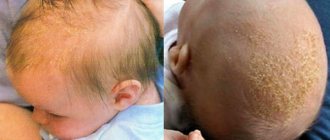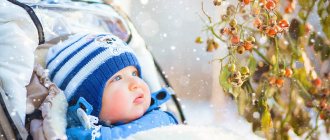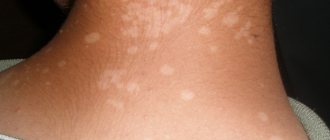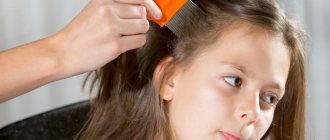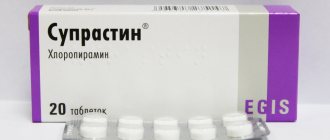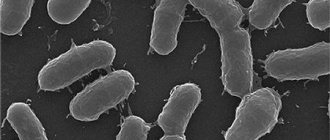Peeling of the scalp in infants at 2-3 months
If the crusts on the head have no odor, there is no inflammation, this is considered normal.
Parents should not panic and sound the alarm if they see that the baby’s head is peeling - this is a natural phenomenon. An exception may be the case when dryness is accompanied by other alarming symptoms.
The child developed for nine months surrounded by liquid, and after birth found himself in an air space. His skin begins to gradually adapt to the new environment. Dryness is a peculiar reaction.
Also, crusts appear against the background of active work of the sebaceous gland. Infants have much more sebaceous secretions, as they have a protective function. Block the penetration of infections, harmful bacteria and various viruses. By the age of one year, the performance of the gland is normalized and the unpleasant symptoms disappear without a trace or consequences.
Hygiene and skin care in children of the first year of life in questions and answers
Shaposhnikov Alexey Evgenievich
Dermatologist
April 24, 2021
1. What happens to a baby’s skin after birth?
The first days after birth, children do not look like the pink babies from magazine illustrations. The skin may not look very beautiful for a long time, do not worry, in most cases, changes in the skin are not diseases, they are considered physiological, that is, they do not require treatment, and everything goes away as the child grows. What situations may arise:
- Physiological jaundice of newborns (jaundice coloring of the skin on the 2nd - 3rd day of life disappears by the 7th - 10th day of life).
- Dilated skin capillaries disappear by 1–1.5 years of age.
- Physiological skin catarrh is redness of the skin after removal of lubricant. On the 3rd – 5th day, peeling occurs, which lasts from 2 weeks to 1 – 2 months.
- Milia (sebaceous cysts) are whitish-yellowish nodules 1-2 mm in size, rising above the skin level and appearing mainly on the wings of the nose and on the forehead. Occurs in approximately 40% of newborns. These are sebaceous glands with abundant secretion and clogged excretory ducts. If there are signs of mild inflammation (redness), the nodules can be treated with a 0.5% solution of potassium permanganate. Completely disappear by the first year of life.
- Gneiss (milky crust) - white or light yellow scales on the scalp. They are allergic in nature, so when they appear, you should analyze the diet of the nursing mother and consult a pediatrician. To remove, before bathing you can lubricate the crusts with sterilized vegetable oil, and then carefully remove the softened crusts with a cotton swab or a special brush.
2. How to monitor the condition of your child’s skin?
All skin folds are straightened by hand (thumb and forefinger) and inspected to identify residues of powder, oil, or redness of the skin, etc. You need to start with the neck, then the palms, with each finger examined separately, the elbows and armpits, then the legs, interdigital spaces, popliteal and thigh folds. Particular attention should be paid to the genitals, as irritation often occurs there.
3. What products are usually used for care, are there any special features?
These are special children's cosmetics: powder, oil, cream. The cream, as the most oily, is used for severe dry skin, but not in the folds, because may cause diaper rash. If there is no pronounced dryness of the skin, it is enough to use oil; it can also be used to treat folds. If the skin folds are deep, it is better to use powder. The simultaneous use of oil (cream) and powder is not allowed, as the resulting lumps accumulate in the folds of the skin and cause redness and irritation. There is no need to completely cover the child with oil or cream, this inhibits the respiratory function of the skin. It is enough to treat problem areas.
4. What detergents are best to use and how to bathe a child?
Regular baby soap used in soft water can significantly dry out the skin, so it is better to use medicinal cosmetic cleansers. For the first 6 months of life, it is necessary to bathe every day, preferably in the evening, before the last feeding. The water temperature is 37 degrees, in the newborn period the water should be boiled, for older children it should be heated and cold, and they can be bathed every other day. If possible, it is better not to use hot tap water, especially if you have skin problems; it has an irritating effect due to various additives. It is better not to use washcloths, but washing with soap once a week is enough.
5. What herbs are best to use?
The golden rule is not to mix herbs, this way, if a problem occurs, you can always identify the “culprit”. In our region, it is better to use calendula (disinfectant, anti-itch), sage (anti-inflammatory), violet (disinfectant), viburnum bark (disinfectant, anti-inflammatory). Previously widely used string, chamomile, celandine in the soft water of our city aggravate dry skin and it is better not to use them at all.
To prepare a decoction for bathing, boil 100 g of herbs over low heat for 5-10 minutes. and diluted in 10 liters of water. The grass should be in a gauze bag. Bathing lasts about 10 minutes, every other day, for a course of 10-15 procedures.
6. How to properly wash and care for the skin under a diaper?
The diaper should be changed at least every 3-4 hours; at night, if the baby sleeps peacefully, this period can be increased. When breastfeeding, bowel movements can occur quite often, and of course, every time you do this, you need to wash the baby and change the diaper.
At any age, it is necessary to arrange “air baths” when changing clothes, so that the child can be without a diaper for some time, from 15 minutes and the more, the better. This is not only good for the skin, but is also an excellent hardening procedure.
You can wash your baby under the tap, not forgetting that girls are washed from front to back. To cleanse the skin, it is better to use liquid baby cleansers that have a neutral pH and do not dry out the skin. It is better not to use wet wipes all the time, leaving them for situations when the baby needs to be changed outside the home.
You can apply a protective baby cream with zinc under the diaper, which will create a thin, breathable barrier, preventing redness and irritation. Protective baby cream can also have an antibacterial effect.
7. What skin problems most often occur in infants?
If a small pink rash appears on the back or back of the head, it is most likely prickly heat caused by overheating. To prevent heat rash, a child should be dressed according to the season, not wrapped up, and monitor the temperature in the room where the child sleeps.
Diaper rash is manifested by bright redness of the skin of the buttocks and inguinal folds. To prevent diaper rash, it is necessary to properly and regularly cleanse the baby’s skin, thoroughly dry and ventilate the skin and folds during air baths, and apply moisturizers containing drying agents (zinc oxide, talc). In this case, you need to use diapers with caution and for a short time, maximizing the air baths.
Often diaper rash in newborns occurs as a result of fungal infection of the skin and mucous membranes (thrush) . In this case, consultation with a dermatologist and special treatment are necessary.
Pyoderma manifests itself as small superficial pustular rashes. Often found in young children and caused by staphylococci and streptococci, it is an infectious skin disease. If a child develops pustular rashes, it is necessary to consult a dermatologist.
Allergic dermatitis is the general name for redness, spots, peeling and rashes on the skin of an allergic nature. Allergic dermatitis is not a skin disease, it is a manifestation of an allergic reaction when, due to the immaturity of the immune and digestive system, some substances entering the body are not absorbed and provoke irritation. Can be food or contact. If allergic dermatitis appears, you need to consult a pediatrician who will help you choose a diet and advise how to relieve the symptoms.
Prevention includes long-term breastfeeding, proper introduction of complementary foods, and a hypoallergenic lifestyle. If parents are allergic to anything, or they themselves had skin problems in childhood, and currently have dry skin, or have skin diseases, then it is necessary to be more attentive to prevention, because negative tendencies are often inherited.
8. What to do if skin problems do appear and tend to persist?
If changes in the skin become persistent, itching appears, the child becomes restless, be sure to visit a dermatologist, especially in the following cases:
- Affects 20% of the skin surface, or 10%, including the eyelids, hands, and skin folds.
- Severe peeling and redness of the skin.
- Attachment of infectious complications on the skin.
- In diagnostically unclear cases.
How to identify the pathogen
It is almost impossible not to notice peeling, but there are still certain criteria that help to accurately identify the problem. Symptoms that are considered normal:
- the presence of a white or yellow crust;
- absence of any odor;
- problem areas make you want to scratch;
- the flaked pieces of skin resemble dandruff.
If you have any disease, slight swelling and redness may appear. In some cases, ignoring the symptoms can lead to the crust moving from the head to other parts of the body. Situations like this require medical attention.
Peeling - as a result of improper care
Long, frequent bathing, aggressive soap, too warm water - a blow to the protective barrier of the child’s skin. This can often lead to dryness and flaking. There are opinions that the first bathing of the baby should be done with the addition of potassium permanganate to the water in order to disinfect it. So: it’s absolutely not worth doing this. There is no evidence that the method works, but the substance has a negative effect on the skin of a child.
According to the recommendations of the Union of Pediatricians of Russia, the water temperature for baths should be at 36.5-37.5 °C. Newborns do not need daily bathing; regular hygiene procedures and 2-3 baths per week are recommended.
Features of the influence of external and internal factors
After bathing, the crusts are gradually combed out.
Various factors can provoke the appearance of dry crusts. It is worth considering each case separately. External reasons include:
- Detergents. Soap and other care products contain a high content of chemicals and alkali. These components negatively affect the skin and cause excessive dryness. You should not resort to washing with soap and shampoo every day.
- Increased sweating occurs due to excessive wrapping. The child sweats, the hair becomes damp, irritation and flaking appear.
- Sun rays in large quantities negatively affect the baby’s skin, causing burns, which are accompanied by peeling. At sea, during walks, you should avoid direct contact with the sun.
- Synthetic bedding is the main irritant to a child's delicate skin. Only products made from natural, undyed fabric are suitable for babies.
- Powders and conditioners used when washing children's clothes can remain in the fabric, they provoke the appearance of peeling. It is worth giving preference to high-quality detergents that are designed specifically for children.
To make the scales separate faster, use an oil gel or cream.
Dryness is often caused by other irritants, which are more difficult to identify. A newborn’s head peels for the following reasons:
- Allergy. The mother needs to carefully monitor her diet, as she has a physiological connection with the baby. While breastfeeding, do not consume potential allergens: citrus fruits, chocolate, bee honey and seafood, otherwise all this will immediately affect the baby’s skin.
- Individual intolerance to formula milk if the child is artificially fed. It’s worth trying a different brand, since the problem cannot be solved without removing the main irritant.
- Fungal diseases are very often accompanied by peeling, but the disease is rarely found in newborns; children from two years of age are more likely to experience it. The exception is congenital ichthyosis. Both problems require drug treatment.
- Intestinal problems and helminthiasis. With these pathologies, additional symptoms appear: redness, itching and rash.
Vitamin deficiency is also an internal cause of skin problems. This situation requires contacting a pediatrician. Giving vitamin complexes to a child on your own is strictly prohibited.
How to eliminate peeling
The skin of a newborn is extremely thin, delicate, and of course, it is very prone to irritation, especially from aggressive secretions. Therefore, you need to take proper care of her: change diapers on time, wash the baby with warm water and specialized cleansing products, wipe the face and folds on the neck after each burping and feeding, bathe the baby daily and give air baths. After cleansing, lubricate all potentially problematic areas with special children's cosmetics.
It is important when caring not to use regular, “adult” soap - it dries out the skin of babies too much. There is a special product for this - hypoallergenic Cream-gel for washing babies with panthenol My Sun®. It contains dexpanthenol, which moisturizes the skin well, as well as lactic acid, which neutralizes the harmful effects of an alkaline environment upon contact with a wet diaper.
In some cases, parents are deprived of the opportunity to wash their child. In such cases, we recommend using Wet baby wipes with panthenol My Sun®. They are soft, hypoallergenic, contain moisturizing and softening components, and silver ions. Thanks to this special impregnation composition, the wipes gently cleanse, preventing dryness and irritation of even very delicate, sensitive skin.
Is it necessary to remove crusts from a baby's head?
If an infection gets into the skin, it is necessary to use antifungal ointments.
The crusts, as a rule, go away on their own by one year, so there is no need to do anything to eliminate them. According to pediatrician Komarovsky, measures should be taken in the following cases:
- suppuration forms;
- an unpleasant odor appears;
- a weeping surface is formed with the release of ichor;
- there is redness and swelling around the crust.
These symptoms indicate that an infection has penetrated the skin. These cases require contacting a clinic.
Treatment for peeling skin
Seborrheic dermatitis requires longer treatment.
Peeling needs to be treated if it is caused by any disease. All other cases do not need this; it is enough to carry out the treatment twice a day. You can use the old proven method:
- boil vegetable oil;
- cool it down;
- wipe problem areas on the head with a cotton pad soaked in oil.
The pharmacy has a wide selection of cosmetic mixtures for treating peeling skin. You can choose the oil taking into account your skin characteristics and individual intolerances.
Peeling - as a symptom of the disease
Eczema and atopic dermatitis
Characterized by red, dry patches on the skin. In infants, it most often occurs on the scalp or face. Parents are advised to look for triggers that could cause an outbreak: it could be a reaction to baby cosmetics or an allergy to an item. There is no cure for eczema, but doctors prescribe medications to help relieve symptoms.
Ichthyosis
A very rare disease in which babies are born with an extra layer of skin on their body. It consists of a layer of skin cells that should have sloughed off before being born. Such children are observed in the intensive care unit until the skin condition returns to normal.
Seborrheic dermatitis
In the first three months of your baby's life, you may notice that his scalp is flaking. Most likely, this is seborrheic dermatitis, which occurs in children of this age and goes away on its own. But if the condition worsens or drags on, do not delay a visit to the pediatrician.
Prevention of flaking of the scalp in infants
Preventive measures include strict adherence to the rules of hygiene and care.
- Do not use regular soap or gel for adults when bathing a newborn. It is better to use baby soap; it does not contain irritants or other substances dangerous to the baby.
- Water is pre-cleaned from chlorine, this is done by boiling, filtering or settling for several days. It is recommended to add herbal infusions as an emollient.
- After bathing, the head and body are dried with a soft towel, and the skin is treated with baby powder or special oil. If there is peeling on the baby's head, the crusts are combed out; for this you will need a soft brush without sharp metal teeth.
It is important to maintain a microclimate in the children's room that is comfortable for a newborn to live in. The temperature should be between 20-22 degrees, optimal humidity from 50 to 70%.
